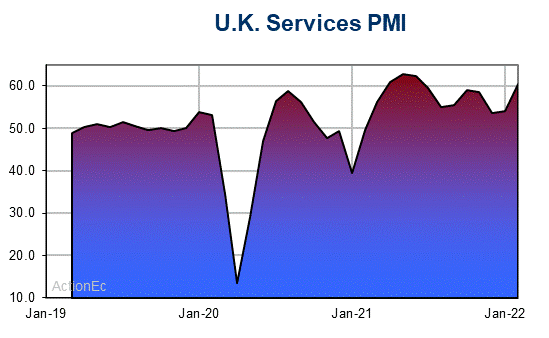The BoE left monetary policy unchanged yesterday, as widely expected. The updated forecasts from the inflation report are somewhat more bullish on growth, which should be supported by domestic demand, but also a slight improvement in net trade over the forecast period.
Near term inflation forecasts were cut, but this was mainly due to energy prices and the central bank still sees a build up of excess demand and a rise in headline inflation towards the end of the forecast period. Lower market interest rates meanwhile, have been translated into rising prices for riskier assets and an easing of financial conditions that further boosts domestic demand.
Against that background the tightening bias at the BoE remains in place, and a smooth Brexit scenario could see the BoE hiking quicker than markets are currently pricing in, as Carney highlighted during the press conference.
Like in the Eurozone, GDP growth in the UK seems to have also been stronger than anticipated in the first quarter and the updated inflation report now puts it at around 0.5% q/q, up from 0.2% in Q4 last year. As has been noted before, however, part of the uptick in manufacturing may reflect a boost from companies building up stocks ahead of a potential no deal Brexit and the BoE noted the somewhat erratic pattern of monthly movements in output. At the same time, business surveys have weakened and in themselves would actually point to weaker growth in Q1, with the BoE highlighting that the discrepancy between surveys and actual data is likely to be higher in times of high uncertainty.
And given Brexit developments and the fact that PM May left a “no deal” scenario on the table right until the very end of the initial deadline, it would be no surprise if companies stock piled in order to prepare for any scenario.
As we have highlighted recently, the noise in UK data is particularly high at the moment and despite the likely better than anticipated performance in Q1, the BoE still sees short term growth slightly below potential in the second half of 2019.

As in 2018, private consumption is expected to remain the main driver of growth, also thanks to a very strong labour market, although the latter is partly a reflection of a pronounced weakness in investment, with companies taking on more staff, particularly on temporary contracts, rather than investing in a longer term expansion of production capacity. This leaves the BoE with two problems. On the one hand, the tight labour market is pushing up wage growth, on the other, the weakness in investment means potential growth is lower than what it had been anticipated ahead of the Brexit referendum.
However, while the BoE stressed that “the monetary policy response to Brexit, whatever form it takes, will not be automatic and could be in either direction”, it is clear that the delay in the tightening path is starting to show. The aforementioned drop in market rates may not accurately reflect the BoE’s policy stance, but it still has an impact also on asset prices in the U.K. With investors switching into riskier assets in a search for demand and in the hope of ongoing policy support the question is whether this is sustainable in the long run or whether rates are in fact to low too prevent a build up of financial risks.
Bloomberg calculations show Britain’s unsecured consumer debt pile rising at an annual pace of around 6.5% and this clearly is something to keep a close eye on, as Brexit uncertainty and geopolitical trade tensions persist and force the BoE to hold off on rate hikes for now.
Overall, the BoE remains in a wait-and-see stance with a close eye on Brexit developments, but if things develop along expected lines and with a smooth Brexit transition, the BoE will likely act quickly and tighten rates. Indeed, Carney made that clear at the press conference today, saying that “some form of a smooth transition” to Brexit “will require interest rate increases over that period and it will require more and more frequent interest rate increases than the market currently expects”.
Click here to access the Economic Calendar
Andria Pichidi
Market Analyst
Disclaimer: This material is provided as a general marketing communication for information purposes only and does not constitute an independent investment research. Nothing in this communication contains, or should be considered as containing, an investment advice or an investment recommendation or a solicitation for the purpose of buying or selling of any financial instrument. All information provided is gathered from reputable sources and any information containing an indication of past performance is not a guarantee or reliable indicator of future performance. Users acknowledge that any investment in FX and CFDs products is characterized by a certain degree of uncertainty and that any investment of this nature involves a high level of risk for which the users are solely responsible and liable. We assume no liability for any loss arising from any investment made based on the information provided in this communication. This communication must not be reproduced or further distributed without our prior written permission.



















